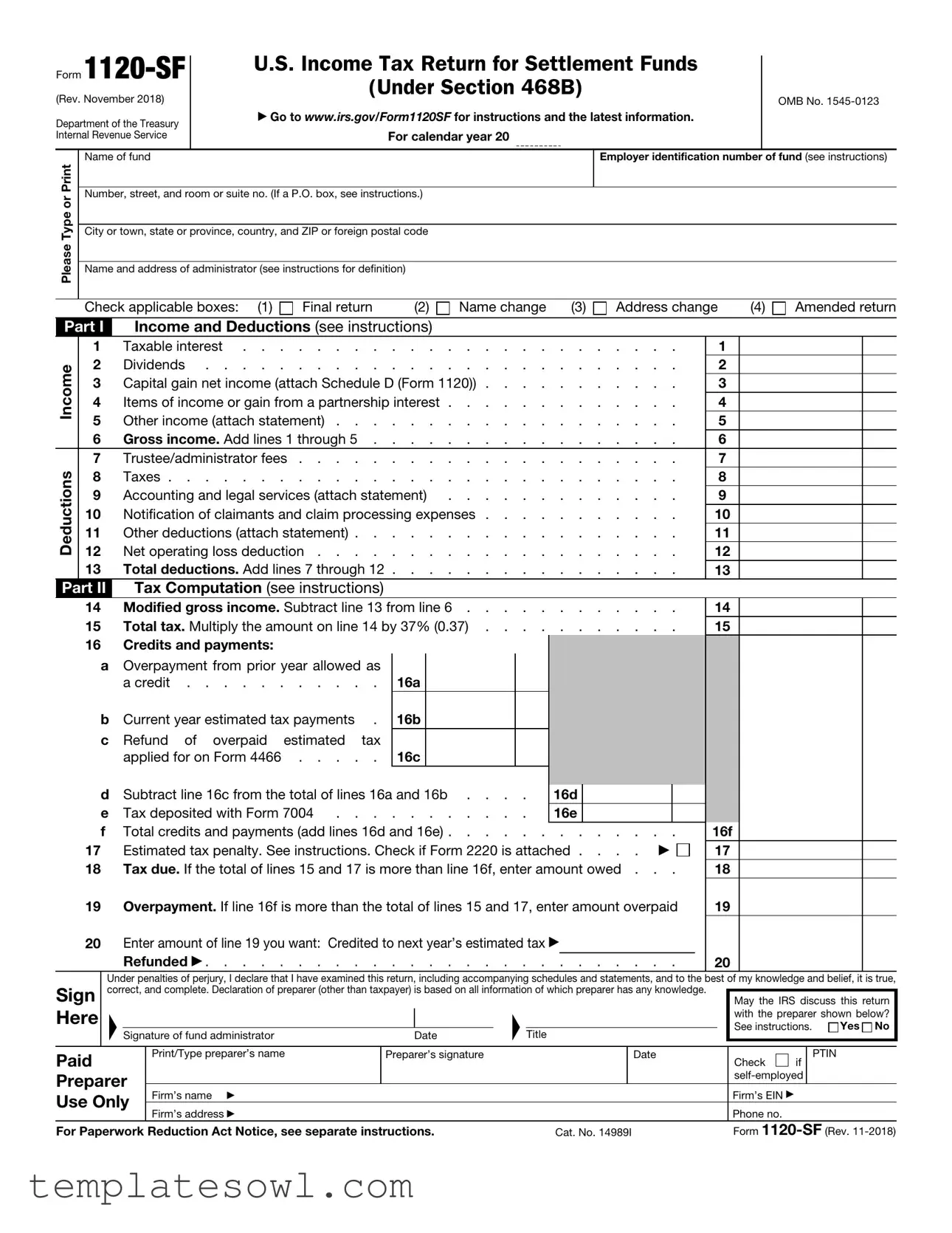What is Form 1120-SF?
Form 1120-SF is the U.S. Income Tax Return for Settlement Funds, specifically designed for entities established under Section 468B of the Internal Revenue Code. This form is used by settlement funds to report their income, deductions, and taxes owed to the IRS. It was last revised in November 2018.
Who needs to file Form 1120-SF?
Any administrator of a settlement fund that qualifies under Section 468B must file Form 1120-SF. This includes funds created to settle claims related to personal injury, wrongful death, and other civil actions. If your fund fits this description, it is essential to comply with this filing requirement.
When is Form 1120-SF due?
Form 1120-SF is typically due on the 15th day of the third month after the end of the fund's tax year. For most funds that operate on a calendar year, this means the due date is March 15. However, if the due date falls on a weekend or holiday, the filing deadline is extended to the next business day.
What information is required to complete Form 1120-SF?
To fill out Form 1120-SF, you will need to provide details about the fund including its name, employer identification number (EIN), and the address. Additionally, you must report various types of income like taxable interest, dividends, and any capital gains. You'll also need to list deductions and compute the total tax liability.
What happens if the form is not filed on time?
If Form 1120-SF is not filed by the due date, the IRS may impose penalties. These penalties can accumulate quickly, leading to significant financial consequences for the fund. It's vital to file on time or seek an extension if necessary. An extension will give you additional time but will still require a payment of any estimated tax due.
Can I amend Form 1120-SF after it’s filed?
Yes, it is possible to amend Form 1120-SF if you discover an error or need to make changes after it has been filed. You would check the box for "Amended return" on the form and submit the completed form along with any relevant documentation to the IRS. Ensure that the amendment is submitted as soon as possible to avoid complications.
Who can help with the completion of Form 1120-SF?
It is advisable to seek assistance from professionals who are experienced in tax preparation, especially those familiar with settlement funds. Legal and tax advisors can guide you through the specifics of the form, ensuring that all income and deductions are properly reported and compliant with IRS regulations.
Where can I find instructions for Form 1120-SF?
Detailed instructions for completing Form 1120-SF are available on the IRS website at www.irs.gov/Form1120SF. It is important to review these instructions carefully to ensure accurate and complete submission of the form.


